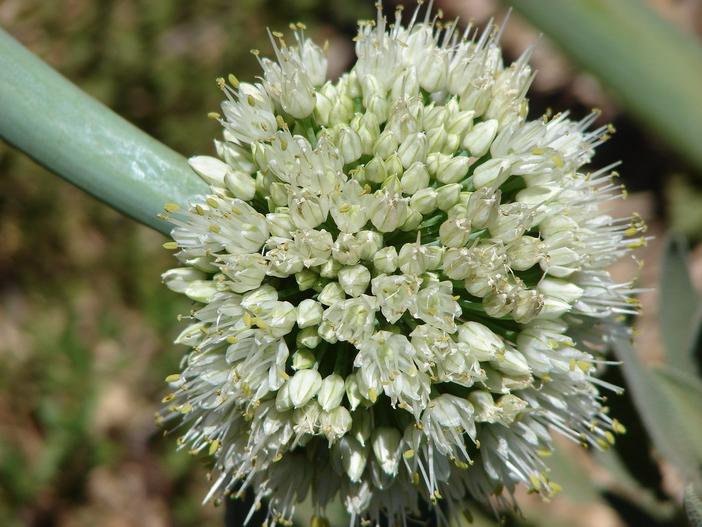Welsh Onion
(Allium fistulosum)
Welsh Onion (Allium fistulosum)
/
/

Forest and Kim Starr
CC BY 2.0













































Estimated Native Range
Summary
Welsh Onion is valued for its culinary uses, as all parts of the plant are edible and can be used similarly to scallions or chives. It is a popular choice for kitchen gardens, herb gardens, and as a border plant in ornamental gardens. In cultivation, it requires full sun and medium amounts of water, thriving in a range of soil types with slow, medium, or fast drainage. It is relatively easy to maintain and can be propagated by seed, division, or offsets. While not prone to serious diseases or pests, it can occasionally suffer from onion fly or thrips.CC BY-SA 4.0
Plant Description
- Plant Type: Herb
- Height: 1-3 feet
- Width: 1-1 feet
- Growth Rate: Moderate
- Flower Color: White
- Flowering Season: Spring
- Leaf Retention: Evergreen
Growth Requirements
- Sun: Full Sun
- Water: Medium
- Drainage: Slow, Medium, Fast
Common Uses
Bee Garden, Bird Garden, Butterfly Garden, Deer Resistant, Drought Tolerant, Edible*Disclaimer: Easyscape's listed plant edibility is for informational use. Always verify the safety and proper identification of any plant before consumption., Fragrant, Hummingbird Garden, Potted Plant, Rabbit Resistant, Street Planting
Natural Habitat
native to the semi-arid regions, grasslands, and open forests of China
Other Names
Common Names: Bunching Onion, Japanese Bunching Onion, Long Green Onion, Spring Onion, Pibe-Løg, Winterzwiebel, Schnittzwiebel, Röhrenzwiebel, Cebolleta, Pipeløk
Scientific Names: , Allium fistulosum, Allium bouddae, Allium fistulosum var. caespitosum, Allium cepa subsp. fistulosum, Allium fistulosum subsp. caespitosum, Allium fistulosum subsp. giganteum, Allium fistulosum var. giganteum, Allium kashgaricum, Cepa fissilis
GBIF Accepted Name: Allium fistulosum L.